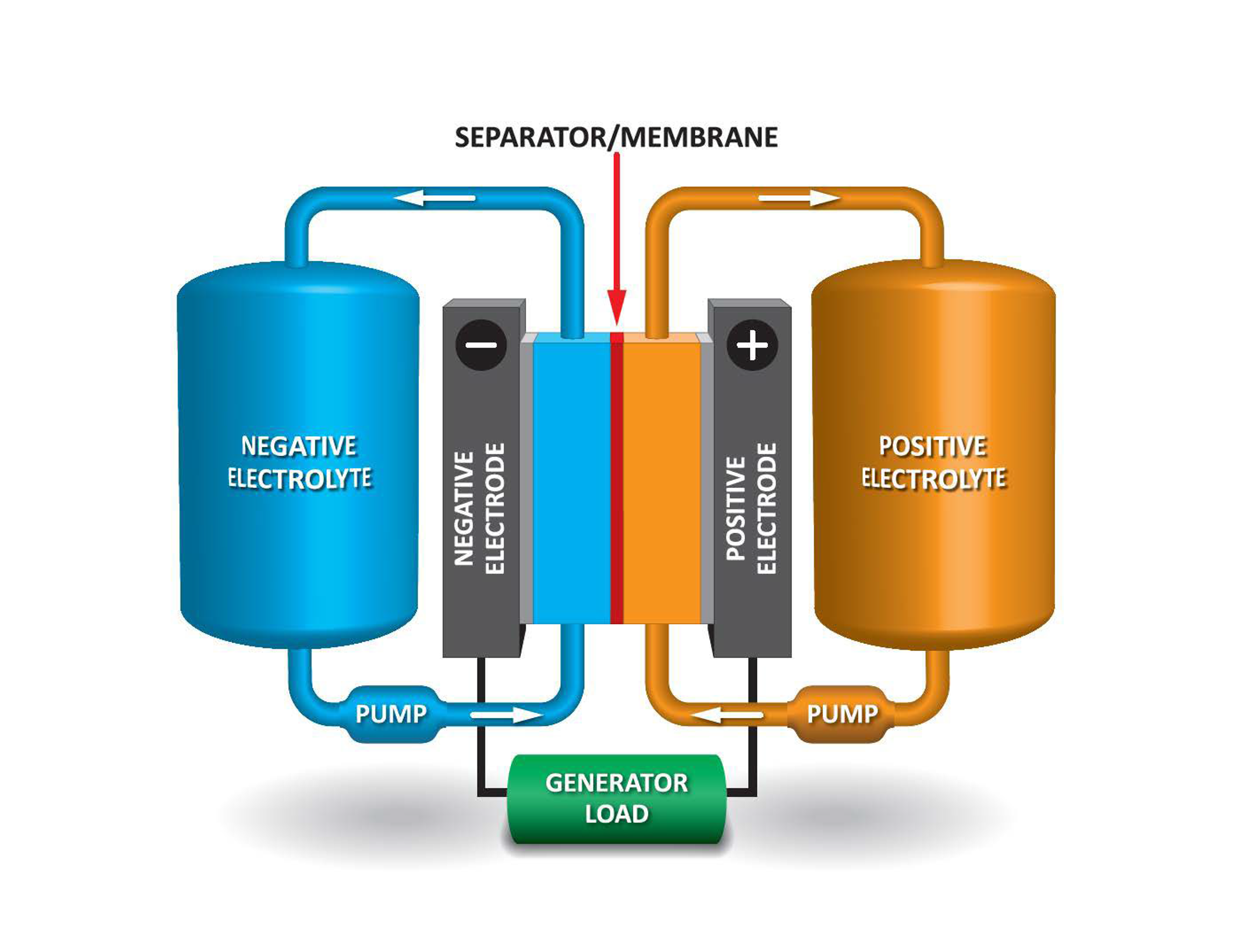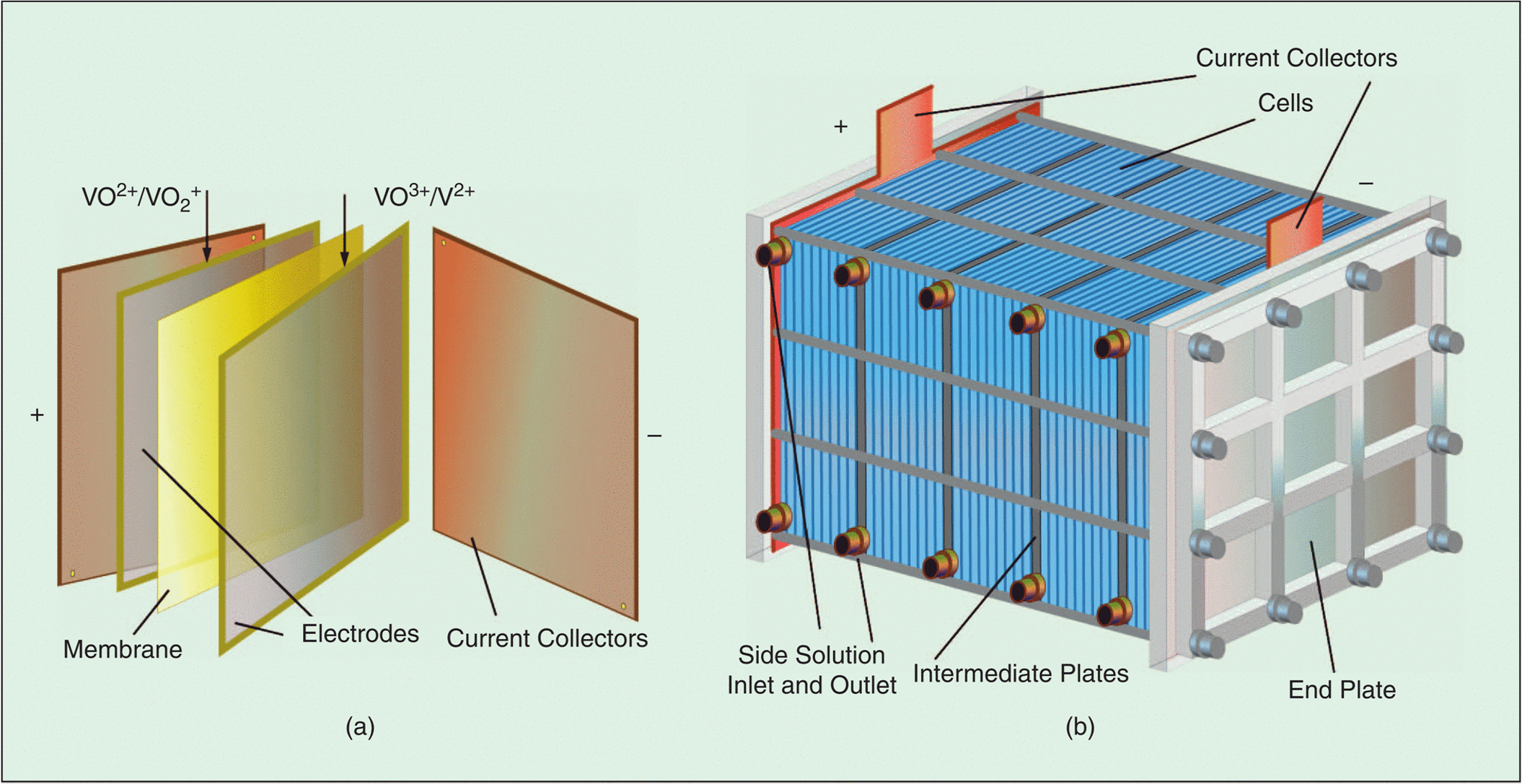Vanadium Redox Flow Battery
Technical Description
Vanadium redox flow batteries (VRB) indeed represent a promising advancement in energy storage technology, particularly for grid-scale applications. Their unique design and operational characteristics offer several advantages over traditional battery systems.
- Rechargeable and Reversible: VRB are secondary batteries, meaning they can be recharged and discharged repeatedly without significant degradation. The vanadium-based electrolyte allows for high reversibility of electrochemical reactions, ensuring long-term reliability.
- Flexibility in Capacity: One key advantage of VRB, shared with other flow batteries, is the ability to independently adjust energy storage capacity and power output. This flexibility allows for optimization according to specific grid requirements and usage patterns.
- Operational Efficiency: VRB operate at ambient temperatures, eliminating the need for costly thermal management systems. This contributes to their efficiency and reduces overall operational costs.
- Longevity: VRB offer a long technical lifetime, with some manufacturers claiming virtually unlimited cycle lifetime within the battery's operational lifespan of up to 20 years. This longevity is a significant advantage over many other battery technologies and contributes to their low levelized cost of storage.
- Safety: Manufacturers promote VRB as being very safe, likely due to their stable electrolyte solutions and absence of volatile or flammable components. This makes them suitable for deployment in various environments without significant safety concerns.
- Recyclability: The electrolytes used in VRB can be easily recycled and reused, minimizing environmental impact and reducing overall lifecycle costs. Additionally, leakage of reactants between electrolyte solutions does not result in contamination, simplifying maintenance and operational procedures.
Overall, the combination of these features positions VRB as a highly attractive option for grid-scale energy storage, offering reliability, flexibility, and cost-effectiveness in meeting the increasing demands of modern power systems.

General advantages and disadvantages of batteries in comparison to other technologies for energy storage

Schematic of flow battery

a) Reaction cell. b) Typical stack
Documentation (Links, References)
- Danish Energy Agency, Technology Data for Energy Storage, April 2024, https://ens.dk/sites/ens.dk/files/Analyser/technology_data_catalogue_for_energy_storage.pdf
